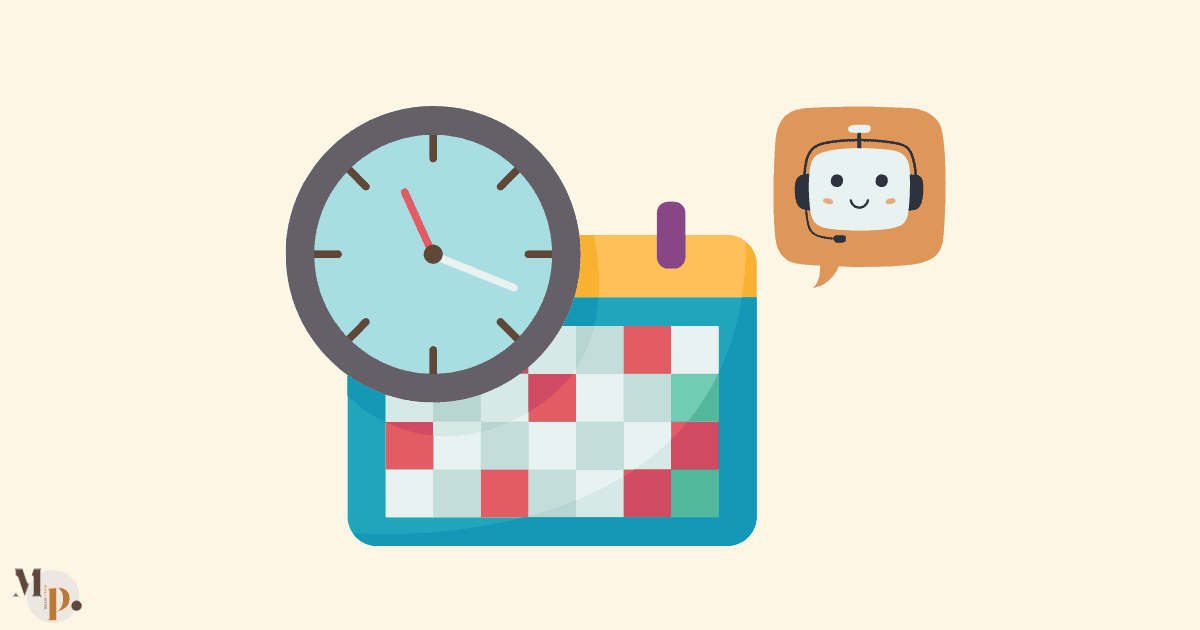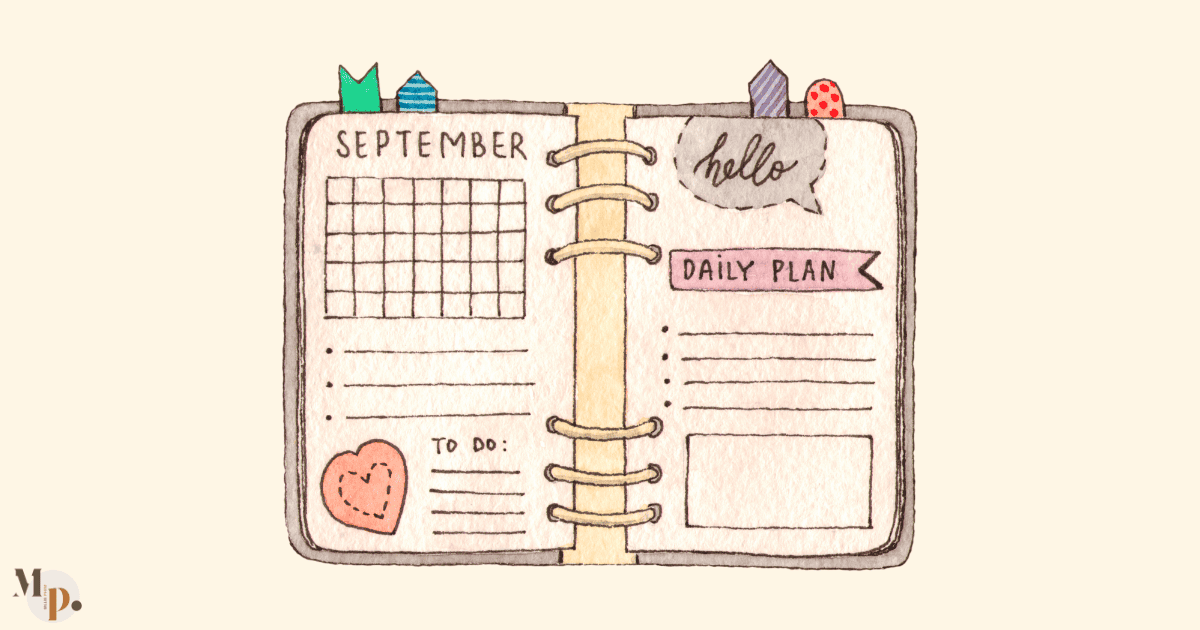
Struggling to keep your schedule under control? You’re not alone. Many people find that traditional calendar tools don’t do enough to help manage their time effectively.
On average, Americans spend about 48 minutes planning for the next day. Men typically spend more time on this than women, with men averaging 52 minutes and women around 44 minutes.
That’s a lot of lost time. But there’s a better way!
In this article, we’ll dive into how AI-powered calendar tools can take the hassle out of planning your day by automating tasks and integrating with your favorite apps.
By the end, you’ll know whether a traditional or AI calendar is the best fit for you in 2024.
What are AI Calendar Tools?

AI calendar tools are smart digital planners that help you manage your time better.
These tools use artificial intelligence to learn about your schedule, predict what you need, and handle tasks like setting up meetings, sending reminders, and finding the best times for your appointments.
They can automatically schedule your day, send you useful notifications, and connect with other apps you use daily.
Popular examples include Motion, Reclaim, and BeforeSunset AI, which all use AI to help you plan your day more effectively.
These tools aren’t just about keeping track of dates; they actually help you make the best use of your time.
Benefits of AI Calendar Tools

AI calendar tools can greatly simplify managing your schedule.
One key benefit is automated scheduling and rescheduling, which means these tools can quickly find the best time for your meetings and automatically adjust if something changes, saving you time and effort.
They also send smart reminders and notifications, so you stay on top of your tasks without having to check your calendar constantly.
These tools often integrate with other apps you use, making your workflow smoother and more connected.
A real advantage is productivity.
This boost in efficiency can make a noticeable difference in how you manage your time daily.
Drawbacks of AI Calendar Tools

While AI calendar tools have many advantages, they also come with some drawbacks that are important to consider.
Privacy and security are top concerns, as these tools often require access to your personal and professional schedule.
This raises questions about how your data is stored, who can access it, and how it might be used.
If you're worried about sharing or misusing your information, this could be a significant issue.
Another downside is the dependence on internet connectivity.
Since AI calendar tools are often cloud-based, you need a reliable internet connection to access your schedule and updates.
If your connection drops or is slow, it can make it difficult to manage your day effectively.
Technical glitches are another potential problem. Like any technology, AI tools can have bugs or experience downtime, which might result in missed appointments or incorrect scheduling.
While these issues are often temporary, they can be frustrating when they occur.
Finally, there's the learning curve.
Getting used to a new AI-powered calendar tool might take some time, especially if you're not familiar with AI technology.
It can also require adapting your habits to make the most of the tool's features, which might not be immediately intuitive for everyone. This can be a barrier to fully integrating the tool into your daily routine.
What about Traditional Calendar Tools?

Traditional calendar tools have been around for a long time and come in various forms, from paper planners to basic digital calendars.
Paper planners, like Moleskine planners, are popular for their simplicity and the tactile experience they offer.
You can write down your appointments, tasks, and notes all in one place, which many people find helps them stay organized and focused.
On the other hand, basic digital calendars, such as the standard version of Google Calendar, provide a straightforward way to keep track of your schedule on your phone or computer.
These digital tools often allow you to set reminders and share your calendar with others, but they lack the advanced features of AI-powered options.
The main features of traditional calendars include writing down and looking at your appointments, easily seeing your whole week or month in one view, and using different colors or symbols to keep things organized.
While they might NOT automatically suggest meeting times or send smart reminders, traditional calendars are reliable and easy to use, making them a good choice for those who prefer a simple, hands-on approach to managing their time.
Popular examples include Moleskine planners for those who like to write things down and the basic Google Calendar for digital users who need just the essentials.
Benefits of Traditional Calendar Tools

Traditional calendar tools have some clear benefits that make them appealing.
First, they are very simple and easy to use. You don’t need to learn any new technology or deal with complicated features—just write down what you need, and you’re set.
Another big plus is that they don’t rely on technology or the internet. A paper planner will always be there for you, even if your phone runs out of battery or you’re somewhere without Wi-Fi. This makes them super reliable.
The physical aspect is also important. Writing things down and turning pages can feel more satisfying and help you connect better with your schedule.
Finally, traditional calendars are easy to customize. You can pick a layout you like, add stickers, or use different colors to make it personal and fun. This makes planning more enjoyable and tailored to your style.
Drawbacks of Traditional Calendar Tools

Traditional calendar tools, while useful, have some drawbacks to consider. One major issue is the lack of automation and smart features.
Unlike AI-powered calendars, traditional tools don’t help you find the best times for your tasks, send reminders, or automatically reschedule events when plans change. This means more manual work on your part.
Another limitation is their lack of integration with other tools.
Traditional calendars don’t sync easily with your email, task manager, or other apps you use, which can make managing your time across different platforms more complicated.
Manual updates can also be time-consuming. Every change or addition needs to be entered by hand, which can be tedious, especially if your schedule changes often.
Finally, there's the potential for human error.
Because everything is done manually, it’s easy to accidentally skip a task, double-book yourself, or forget to update something important.
These mistakes can lead to missed appointments or other issues in your schedule.
AI vs. Traditional Calendar Tools: Which is Better?
When comparing AI calendar tools to traditional ones, several factors make a difference.
Features
AI calendar tools come with advanced options like automatically scheduling meetings, sending smart reminders, and connecting with other apps.
They can even prioritize your tasks for you.
Traditional calendars are much simpler, focusing on basic tasks like writing down events and checking your schedule.
If you need help managing a busy day, AI tools have more to offer.
Cost
Traditional calendars, like paper planners, are usually cheap, often just a one-time purchase. AI tools, though, usually have monthly fees, ranging from $5 to $30 depending on what they offer.
Some, like Reclaim AI, have free options, while others, like Motion, charge more for their extra features.
User Experience
Traditional calendars are easy to use with no learning required. However, they lack the convenience of automation and integration with other tools.
AI calendars can be more complex at first, but once you get the hang of them, they save you a lot of time by handling tasks automatically.
If you’re comfortable with tech, AI calendars can make your life easier and more efficient.
Best for Different Users
Traditional calendars are great for those who like to keep things simple and prefer writing things down. They work well for people who don’t need all the extra features.
AI calendars, on the other hand, are better for busy people who need help managing a full schedule with less effort.
These tools are especially useful if you want to be more productive and organized.
In short, traditional calendars are best if you like simplicity and low cost. But an AI calendar tool is the better choice if you need help managing a busy schedule with smart features
Making the Right Choice for 2024
When choosing a calendar tool for 2024, think about what you really need. Are you just keeping track of appointments, or do you need something that can handle a busy work schedule, manage tasks, and connect with other apps?
If you’re juggling a lot of responsibilities, an AI-powered calendar might be the better choice because it can automate many tasks for you.
As we look to the future, AI is expected to become even more common in calendar tools.
This means more smart features that can predict your schedule and work better with the other tools you use.
These advancements could make AI calendars easier to use and more helpful than ever.
In the end, a traditional calendar might work just fine if you prefer something simple. But if you want to be more organized and make the most of new technology, an AI calendar could be the right choice in 2024.
Conclusion
In short, both AI and traditional calendar tools have their own pros and cons. AI calendars bring automation and smart features that can boost productivity, while traditional tools offer simplicity and a hands-on experience that some users prefer.
The best option depends on what you need and what you like. As we head into 2024, try using both to see which works best for you.
Ready to manage your time better? Start exploring your options today!
